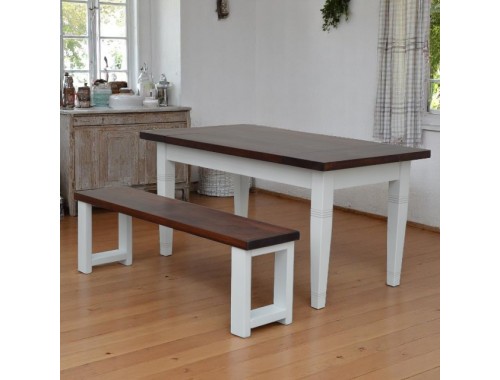Furniture Transport: Precision and Attention to Detail
Furniture transport is a process that requires exceptional precision and attention to detail, as each item being transported may be susceptible to damage. Whether it's finished products or semi-finished goods, furniture requires careful preparation for transport, proper packaging, and the selection of transportation methods that ensure safety. The planning and execution of furniture transport involves many stages, starting with appropriate logistical planning, through the careful choice of the mode of transport, to ensuring proper management of the transportation process. Furniture transport requires close cooperation with carriers and adapting the means of transport to the specific needs of the cargo.
Preparation for furniture transport starts with its proper securing. Each item must be carefully packaged to avoid mechanical damage, such as scratches, dents, or cracks. Popular materials used for packaging include stretch films, bubble wrap, and corrugated cardboard. It is also important to use protective corner pads, especially for furniture with sharp edges or made from delicate materials like glass. For large furniture, disassembling them into smaller parts is often necessary, making furniture transport easier and reducing the risk of damage. An additional step is the proper labeling of shipments so that the carrier is aware of the fragility of the cargo and can apply extra caution. This process also requires precise logistical planning to optimize cargo space usage and ensure timely delivery.
International furniture transport is a challenge that requires advanced planning, especially for long-distance shipments. In Europe, the most popular destinations for furniture transport include countries like Germany, France, the Netherlands, the United Kingdom, and the Nordic countries. Germany, as one of Poland's main trade partners, is a key market due to its geographical proximity and excellent road infrastructure, making furniture transport to Germany highly popular. Transporting furniture to France, on the other hand, requires high-quality logistics services, as French customers expect furniture of the highest quality and exceptional design. Scandinavia, due to specific climatic conditions, requires transportation companies to adapt to changing and harsh weather conditions, especially during the winter months, when transport may be more difficult.
When transporting furniture to the United Kingdom, a key challenge is customs procedures, which have become more complicated after Brexit. Carriers must carefully prepare documentation, including customs declarations, labeling requirements, and specific British regulations. A crucial part of this process is cooperation with local customs agents who help ensure smooth clearance. Another important destination for international furniture transport is Eastern Europe, including countries like Russia and Ukraine. Transporting to these regions requires knowledge of local transport regulations, adapting vehicles to local road conditions, and flexibility in route planning. Transport companies must also consider differences in infrastructure standards and potential delays due to border checks.
The types of furniture most commonly transported include a wide range of products, from upholstered furniture like sofas, armchairs, and beds, to wooden furniture such as tables, chairs, and wardrobes. Kitchen and office furniture are also among the most frequently transported categories, especially due to the growing demand for modern interior furnishings in Western and Northern Europe. Upholstered furniture transport requires special care because their fabrics and construction elements, such as legs and frames, are vulnerable to damage. Therefore, protective covers, additional cushioning layers, and safeguards against moisture and dirt are used. When transporting wooden furniture, it is crucial to protect it from mechanical damage and the impact of changing weather conditions, which is especially important for international furniture transport.
Kitchen furniture transport often involves the transportation of modular elements, which must be delivered in perfect condition, ready for assembly. Similarly, office furniture transport, including desks, shelves, and filing cabinets, is mainly done to business centers in large cities across Europe. This process requires not only careful logistical planning but also adjusting delivery schedules to clients’ timelines. Attention to detail at every stage of the transport process is key to meeting the expectations of customers who demand punctuality and the highest quality of service.
The average cost of furniture transport in Poland depends on the distance and the specifications of the shipment. Typically, transport companies set a rate in the range of 2 to 5 zlotys per kilometer, with costs for short distances of up to 20 kilometers around 80 zlotys, and for routes up to 50 kilometers, the price may reach up to 200 zlotys. Additional services, such as carrying or assembling furniture, may incur extra charges, depending on the number of floors and the weight of the load. International furniture transport involves higher costs. For example, transporting furniture from Poland to Germany may cost between 4,000 and 6,000 zlotys, depending on the size of the vehicle and the specifications of the shipment. The cost of furniture transport to the United Kingdom, France, or Italy often exceeds 10,000 zlotys, considering additional customs fees and clearance requirements. For more distant routes, prices may significantly increase, especially when special transport conditions, such as temperature control or additional security, are required.
Taking all these factors into account, furniture transport is an important element of both domestic and international logistics, requiring the application of advanced technological and organizational solutions. With proper preparation, careful planning, and attention to the safety of the transported goods, transport companies successfully deliver furniture to various parts of the world. Considering the specific requirements of clients and ensuring the highest service standards allows businesses to build long-term relationships and strengthen the market position of Polish transport companies.

 pl
pl  en
en  de
de  es
es  fr
fr  it
it  pt
pt  ru
ru  sv
sv 



























